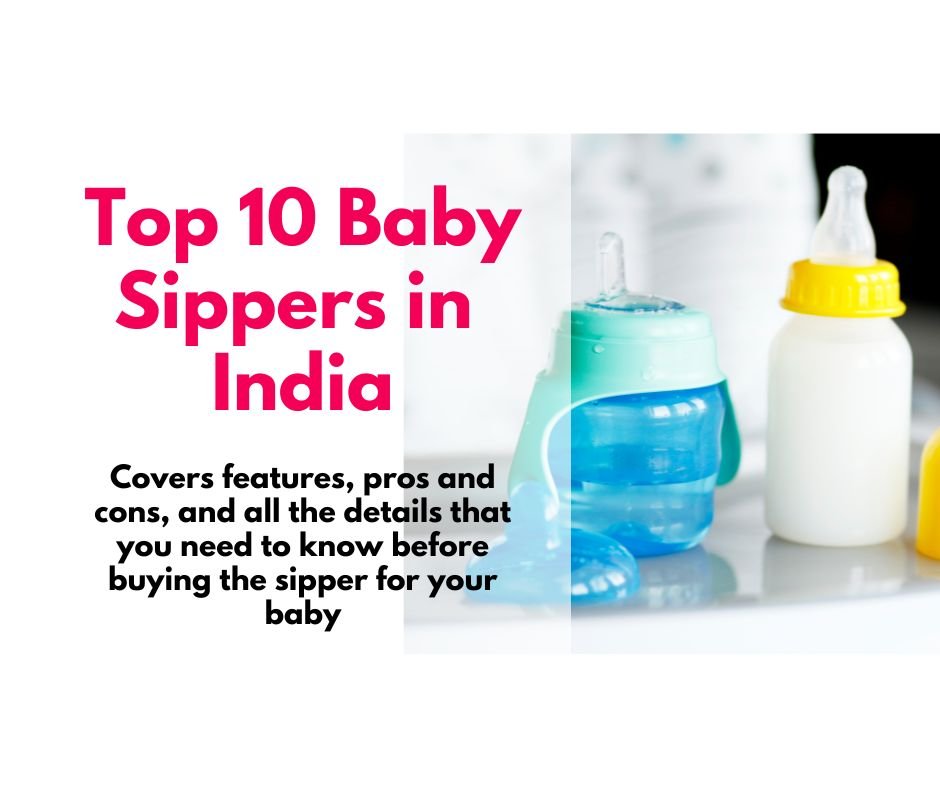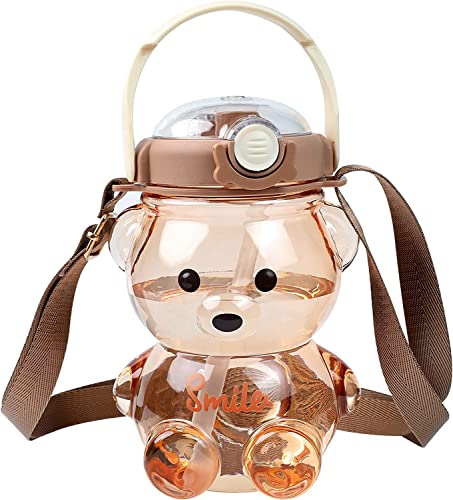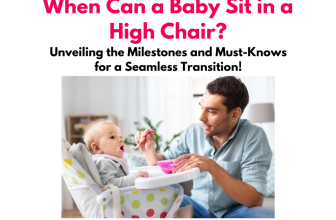
When babies are young, their primary source of nutrition is their mother’s milk. However, as babies become older, they do require other liquids in addition to milk for a balanced diet. And to simplify the transition and close the gap between the breast and the cup, a sippy cup is the best solution. According to a world-famous pediatrician, “If given the choice between having milk in an unfamiliar cup and water in their favorite bottle, most kids will choose the cup.” Therefore, a lovely, baby-friendly sipper can be a fantastic option to ease the transition.
To assist new parents, we have done a significant amount of research in selecting the best sippy cup intended for the transitional phase.
Many factors were taken into account by our staff when shortlisting infant sippers, some of which are included below.
- Type of spout: The spout of a sippy cup is one of the main factors to take into account. The portion of the cup that makes touch with your child’s mouth—the spout—can therefore have an impact on how their teeth erupt. You must choose your child’s sippy cup spout with the same level of care as you choose the teats for their feeding bottle. The most common spout styles offered in sippy cups are Soft Spout, Hard Spout, Straw, Open Rim, and Spoutless.
- Material: A lightweight cup is typically preferred when the baby is younger than nine months old. So choose one made of plastic or light steel. Food-grade steel is typically preferable to plastic. Contrary to plastic, choose a silicone spout of medical grade.
- Easy to Use: The cups are made to fit comfortably in the small hands of babies. Trainer handles are helpful for a baby under 9 months old to grasp the cup and invert it for drinking. The cup’s form and grip should be such that a baby older than 9 to 12 months can readily handle it in both hands.
- Handles: Sippy cups with handles are a great choice so that little hands can hold them. One handle or two handles—one on each side—can be seen on cups. Perhaps you should consider sippy cups with built-in grips. When your child is no longer in need or interested in the handles, you can remove them from his sippy cup using a sipping system.
- Leak-proof: If you’re going for a drive or a stroll through the park, having a leak-proof cup is a tremendous benefit. Sippy cups that are leak-proof typically include valved spouts so that the liquid can be delivered more conveniently.
- Customer Reviews: This is yet another crucial factor that our team considered when choosing products. We read through Amazon customer reviews to select sippy cups that have received great marks from other parents.
Best sipper for 6 months baby
When it comes to introducing your 6-month-old baby to a sippy cup, choosing the right one can make all the difference. Sippy cups can help your baby learn to drink from a cup and transition from a bottle, but there are a lot of options out there, so how do you know which one is best?
Here are a few tips to help you choose the best sipper for your 6-month-old baby:
- Look for a soft spout: Babies at this age are still developing their oral skills and may not have strong jaw muscles yet. A soft, silicone spout can be easier for them to use and can help prevent any discomfort.
- Choose one with handles: Your baby is still learning to coordinate their movements, so a sippy cup with handles can make it easier for them to hold and maneuver the cup. Plus, it’s a great way to encourage their independence.
- Check for spill-proof features: While it’s important for your baby to learn how to drink from a cup, it’s also important to minimize spills and messes. Look for a sippy cup with a spill-proof valve or a lid that snaps shut.
- Avoid cups with straws: While cups with straws may seem like a good idea, they can actually be more difficult for a young baby to use. Straws require more advanced oral motor skills and may cause your baby to swallow air, leading to gas and discomfort.
Some popular options for 6-month-old babies include the
- Munchkin Miracle 360 Trainer Cup,
- the Nuby No-Spill Super Spout Grip N’ Sip, and the
- Philips Avent My Bendy Straw Cup.
Ultimately, the best sipper for your baby is one that they feel comfortable using and that works well for your family’s needs.
Also read Top 10 Feeding Bottles with Spoon in India for Mess-free Mealtime Bliss
Top 10 Baby Sippers in India
The market is flooded with different types of sippy cups. We’ve compiled a list of the top-selling brands in India and their most popular sippy cups in the post to assist you in choosing the best sippy cup for your child.
Ease the transition from bottle to cup with the Top 10 Baby Sippers in India! Find the perfect sipper for your little one, with a range of safe, durable and leak-proof options. Order now and make feeding time a breeze.
Philips Avent My First Transition Cup
Philips Avent My First Transition Cup is very good for infants from 6 months and up.
Philips Avent Silicone Rubber Classic Soft Spout Cup, (Pink/Purple) 200 ML 1...
- Leak-proof
- BPA free material
- Peristaltic silicon nipple
- Capacity: 200 ml
- Leak-proof
- BPA free material
- Peristaltic silicon nipple
- Capacity: 200 ml
Pros
- Suitable for infants six months of age and older.
- Perfect for everyday use
- Easy to clean
- Detachable
- Made from a BPA-free substance
- Good size
- Long-lasting
Cons
- Pricey
- Handles have a jiggly motion.
Munchkin Miracle 360 Trainer Cup
I personally recommend Munchkin Miracle 360 Trainer Cup as have extensively used it for my baby. It helped in a smooth transition to regular glass/cup.
Munchkin 7oz Miracle 360° Trainer Plastic Cup with Lid - Blue 1...
- Toddler training cup with dentist recommended, spotless design
- 360-Degree drinking edge eliminates spills completely
- Cup automatically seals when child stops drinking
- Comes with same colour lid
- Top rack dishwasher safe, bpa-free, 6 plus months, easy to clean with no extra valves or parts
- Toddler training cup with dentist recommended, spotless design
- 360-Degree drinking edge eliminates spills completely
- Cup automatically seals when child stops drinking
- Comes with same colour lid
- Top rack dishwasher safe, bpa-free, 6 plus months, easy to clean with no extra valves or parts
Pros
- Automatic sealable design
- BPA free material
- Suitable for kids six months of age and older.
- comfortable handles.
- Dishwasher safe and simple to clean.
- Vibrant tints.
Cons
Assembling is not smooth
NUK Learner Sippy Cup
This Learner Sippy Cup has handles with an anti-slip surface, helping your baby to have a good grip.
Nuk Learner Cup Silicone Bundle Pack - Boy - 5 Ounce
Pros
- Handles with anti-slip surfaces.
- Both portable and strong.
- Complies with global safety standards.
- Available in adorable designs.
- Appropriate for younger infants.
- Dishwasher-safe.
Cons
- Spouts may only emit a small amount of water.
- Possibly not suitable for outings
R for Rabbit Premium Bubble Sipper
R for Rabbit Premium Bubble Baby Sipper |10 fl oz | Anti...
- Safety 1st : The baby sipper is made of Poly Propylene material which is BPA Free and completely safe for the child
- Leakage Free / Spill Proof: Uniquely designed weighted straw makes it spill-free and liquids can be dispensed at any angle giving more freedom to child.
- Safety 1st : The baby sipper is made of Poly Propylene material which is BPA Free and completely safe for the child
- Leakage Free / Spill Proof: Uniquely designed weighted straw makes it spill-free and liquids can be dispensed at any angle giving more freedom to child.
- Weighted Straw: No matter which way your munchkin chooses to tilt their head, this straw moves with them, ensuring that they can get liquid smoothly at any angle.
- Flip Lid: Flip lid makes the sipper spill-proof, keeps the straw hygienic and makes the sipper travel friendly without spoiling your bag
- Smooth handle: Child can hold the sipper with 2 handles and drink at any angle giving them more independence.
R for Rabbit Sipper is quite an affordable sipper for babies, below are some pros and cons-
Pros
- Beautiful transparent design
- Made of phthalate- and BPA-free materials
- Ideal for 9 months old babies
- Flip lid
- Long-lasting plastic
Cons
- Thin sipper straw
- possibly not dishwasher-safe
Brown’s Cheers 360 Spoutless Training Cup
Spoutless training cup, perfect for training babies.
Dr. Brown's Cheers 360 Spoutless Training Cup /10 oz/300 ml, (Pink)
- Sip-and-see clear silicone valve for transition to a big kid cup
- Drink from any edge for leak-free learning
- Shaped like a real cup with beveled sides
- Sip-and-see clear silicone valve for transition to a big kid cup
- Drink from any edge for leak-free learning
- Shaped like a real cup with beveled sides
Pros
- Approximately one ounce is contained in the cup.
- Lid suitable for travel
- Sturdy straw
- Detachable handles
- Created with BPA-free materials
Cons
- Not leak proof
- It might not be resistant to mold.
Delzon Bear Sipper Bottle
Delzon Bear Sipper bottle claims to help with colic and flatulence
Delzon Teddy Bear Sipper Water Bottle With Straw,Leak-Poof, Mobile Phone Holder,Bpa Free,...
- Color : Multi Color
- Capacity : 1000 ML (1 Liter)
- Size : 22 X 13 CM.
- Features: with Straw, Leakproof, Flip Over Lid.
- More useful function: The top of the lid can also be a phone holder which provides convenience, equipped with an adjustable and removable shoulder strap, the lid is designed with a sealing ring to ensure that water does not leak during the shaking process
- Color : Multi Color
- Capacity : 1000 ML (1 Liter)
- Size : 22 X 13 CM.
- Features: with Straw, Leakproof, Flip Over Lid.
- More useful function: The top of the lid can also be a phone holder which provides convenience, equipped with an adjustable and removable shoulder strap, the lid is designed with a sealing ring to ensure that water does not leak during the shaking process
Pros
- Anti-colic
- Soft silicone straw
- Anti Flatulence control
- Design that saves space
- Free of phthalates, PVC, and BPA
- Reasonable cost
- Comes in beautiful pink color
- Heat and cold resistance
Cons
- Packaging could have been improved
- Unsafe for microwave
Contigo Spill-Proof Kids Tritan Straw Tumbler
This is a cute tumbler-style sipper
Contigo Swish Tritan Water Bottle with Clever Design I One Handed Operation,...
- AUTOSEAL TECHNOLOGY : Patented Autoseal Technology provides 100% on-the-go spill-proof and leak-proof confidence . Lid-lock prevents the autoseal button from accidently being pushed while on-the-go
- ONE-HAND OPERATED : : One-handed operation offers optimal on the go experience , Push button to drink & Release to seal . It doesn't leak when it's closed, so the mug can be tossed into a bag for worry-free travel.
- AUTOSEAL TECHNOLOGY : Patented Autoseal Technology provides 100% on-the-go spill-proof and leak-proof confidence . Lid-lock prevents the autoseal button from accidently being pushed while on-the-go
- ONE-HAND OPERATED : : One-handed operation offers optimal on the go experience , Push button to drink & Release to seal . It doesn't leak when it's closed, so the mug can be tossed into a bag for worry-free travel.
- DISHWASHER SAFE : All parts are fully dishwasher safe. Comes with Easy to clean Lid , One-piece lid – no loose parts to misplace.
- ADDED BONUS : Swish Bottle has a clever design & Fits most car cup holders
- MATERIAL : BPA free & Odor and stain resistant TRITAN. Not suitable for carbonated beverages . Weight :170 Grams
Pros
- Includes a silicone seal for the straw
- Can be mounted on vehicle holders
- The plastic used is devoid of BPA.
- Safe to wash in a dishwasher’s top rack
- Portable style
- Skid-resistant
Cons
Cleaning the venting openings may not be simple.
Munchkin Gentle Transition Trainer Cup
Munchkin Gentle Transition Trainer Cup, 4 Ounce, Pink
- Soft silicone spout is gentle on baby's gums
- Ultra flexible spout moves with baby
- Removable handles are soft and easy to hold
- 4 plus months
- BPA-free & top rack dishwasher safe
- Soft silicone spout is gentle on baby's gums
- Ultra flexible spout moves with baby
- Removable handles are soft and easy to hold
- 4 plus months
- BPA-free & top rack dishwasher safe
Pros
- Ergonomically designed with side handles for a comfortable grip
- Detachable, supple handles
- Suitable for kids four months and older.
Cons
- Possibly not leak-proof
- Could grow mold
Tommee Tippee Sportee Toddler Sippy Cup
Tommee Tippee Superstar Insulated Sportee Toddler Water Bottle, (9oz, 12+ Months, 2...
- Double wall insulated: The insulated base minimizes condensation and keeps water cool to encourage drinking and keep kids cool while playing
- Bite-resistant: The durable, long-lasting, one-piece spout is gentle on little mouths and tough enough to withstand tiny teeth
- Double wall insulated: The insulated base minimizes condensation and keeps water cool to encourage drinking and keep kids cool while playing
- Bite-resistant: The durable, long-lasting, one-piece spout is gentle on little mouths and tough enough to withstand tiny teeth
- Easy clean: Our sippy cups are easy to clean, and sterilizer and dishwasher safe
- BPA-free: All our products are BPA, BPS, PVC, Phthalate and Nitrosamine free
Pros
- Spill-Proof
- Ideal for 12 months or more
- Free of phthalates, BPA, and BPS
- Sterilizer-safe
- It can be used to keep hot beverages
Cons
- It could be hard to get the contents out by sucking.
The First Years Mickey Baby Trainer Straw Cup
The First Years Disney Baby Trainer Straw Cup with Handles, Mickey
Features
- Easy-grasp handles to encourage confident drinking
- Soft-tip straw for comfort
- Spill proof
- Dishwasher safe
- Made without BPA, Phthalate, and PVC-free
Pros
- Includes a soft-tip straw
- Spill-resistant body
- Simple to clean
- Beautiful design
- Free of PVC and BPA. Made of plastic.
Cons
- The straw seems a little fragile.
Classification of Products
Best Sippy Cup for Daily Use: Philips Avent My First Transition Cup
Dishwasher Safe Sippy Cup for Six Months Old: Munchkin Miracle 360 Trainer Cup
Portable and Anti-Slippery Sippy cup: NUK Disney Learner Sippy Cup
Best Sippy Cup in Transparent Design: R for Rabbit Premium Bubble Sipper
Travel-friendly Sippy Cup: Brown’s Cheers 360 Spoutless Training Cup
Budget-friendly Sippy cup: HAPPY BEAR Sea Sipper Bottle
BPA-free and Spill-proof tumbler: Contigo Spill-Proof Kids Tritan Straw Tumbler
Best cup for 4 to 6 months Old Babies: Munchkin Gentle Transition Trainer Cup
Sterilizer-safe Sippy Cup for Toddler: Tommee Tippee Sportee Toddler Sippy Cup
BPA-free and Spill resistance cup: The First Years Mickey Baby Trainer Straw Cup
Which brand sipper is best for babies?
There is no one “best” brand of sipper for babies as the best choice will depend on the individual needs and preferences of the baby and parent. However, some factors to consider when choosing a sipper for a baby are:
- Safety: Choose a sipper that is made of BPA-free materials and has no small parts that could pose a choking hazard.
- Leak-proof design: Look for a sipper with a leak-proof design to avoid messes and spills.
- Easy to clean: Choose a sipper that is easy to clean and disassemble to prevent mold and bacteria buildup.
- Age-appropriate: Select a sipper that is appropriate for the baby’s age, with a size and shape that is easy for them to hold and drink from.
- Durability: Look for a sipper that is durable and can withstand regular use and accidental drops.
Some popular and highly rated brands for baby sippers include Nuby, Munchkin, Tommee Tippee, and Gerber. It’s important to read reviews and research the product specifications before making a final purchase to ensure that it meets your needs and those of your baby.
Newborn Baby Essentials Baby Checklist India
Is sipper good for infants?
Sippers can be a good option for infants who are learning to drink from a cup, but it’s important to choose one that is appropriate for their age and development. For babies under 6 months of age, it’s recommended to use a bottle or a sipper cup with a soft spout or nipple. For older babies who are learning to drink from a cup, a sipper cup with a harder spout can help them transition to a regular cup.
It’s important to choose a sipper that is made of safe and non-toxic materials, such as BPA-free plastic, and is easy to clean to prevent mold and bacteria buildup. Additionally, it’s important to supervise the baby while they are using the sipper to ensure that they don’t choke on the contents.
It’s also recommended to consult with a pediatrician before introducing a sipper to ensure that it’s appropriate for the baby’s development and that it does not interfere with their nutritional needs.
Unveiling best baby clothes brands in India 2023
Is sipper better than bottle?
The choice between a bottle and a sipper for a baby depends on their age, development, and individual needs.
For newborns and young infants, a bottle is typically the preferred method of feeding, as it is easier for them to latch on to and can provide the necessary nutrients they need. As the baby grows and becomes more developmentally ready, a sipper can help them learn to drink from a cup, which can prepare them for eventually drinking from a regular cup.
While sippers can be a good transition from a bottle, they do have some disadvantages. For example, some sippers can be difficult for young babies to hold and drink from, and they may spill or leak more easily than a bottle. Additionally, some sippers can be more difficult to clean than a bottle.
Ultimately, the choice between a bottle and a sipper will depend on the individual needs and preferences of the baby and parent. It’s important to consult with a pediatrician for guidance on the appropriate choice for your baby.
Also Read 11 Easy Ways to Prevent Your Baby from Sleeping with their Mouth Open
Is straw sipper good for babies?
Straw sippers can be a good option for some babies as they help with the transition from a bottle to a regular cup. They offer several benefits, including:
- Improved oral motor skills: Drinking from a straw requires the use of different oral motor skills compared to drinking from a bottle, which can help the baby develop their coordination and fine motor skills.
- Better for dental health: Straw sippers can help prevent tooth decay as the flow of liquid goes to the back of the mouth, reducing the amount of time the baby’s teeth are exposed to sugary liquids.
- Spill-proof: Straw sippers are often spill-proof, which can help reduce messes and make them more convenient for on-the-go use.
However, it’s important to choose a straw sipper that is appropriate for the baby’s age and development. Some straw sippers may have small parts or be difficult for the baby to hold and drink from, so it’s important to supervise the baby while they are using the sipper and to choose one that is safe and easy for the baby to use.
Additionally, it’s important to choose a straw sipper that is made of safe and non-toxic materials, such as BPA-free plastic, and is easy to clean to prevent mold and bacteria buildup. It’s also recommended to consult with a pediatrician for guidance on the appropriate choice for your baby.
10 Proven Techniques to Soothe and Calm Your Colicky Baby for a Good Night’s Sleep
Which is better straw or sippy cup?
The choice between a straw cup and a sippy cup depends on the individual needs and preferences of the baby and parent. Both types of cups have their own advantages and disadvantages.
We have covered the advantages of a straw cup above. Let us look at advantages of sippy cups
- Easier for the baby to hold and drink from: Sippy cups often have handles and a more pronounced spout, making them easier for the baby to hold and drink from.
- Better for transition from bottle: Sippy cups often have a spout that is similar to a bottle, making it an easier transition for the baby.
Ultimately, the choice between a straw cup and a sippy cup will depend on the individual needs and preferences of the baby and parent.
As read How to choose safe and best baby shampoo in India
What age should you start using a sippy?
The age at which you should start using a sippy cup varies and depends on the individual needs and development of the baby. However, it is generally recommended to start introducing a sippy cup to babies when they are between 6 and 9 months of age, or when they have started to develop the ability to sit up and hold their head steady.
It’s important to choose a sippy cup that is appropriate for the baby’s age and development, made of safe and non-toxic materials, and is easy to clean to prevent mold and bacteria buildup. Some sippy cups may have small parts or be difficult for the baby to hold and drink from, so it’s important to supervise the baby while they are using the sipper.
Additionally, it’s important to transition the baby from a bottle to a sippy cup gradually, allowing them to get used to the new cup and develop their drinking skills. The transition may take some time, so it’s important to be patient and to offer the sippy cup in addition to a bottle, rather than as a replacement, during the transition period.
Is it OK to give milk in a sippy cup?
Yes, it’s okay to give milk in a sippy cup to babies and young children. Sippy cups are a convenient way for babies and young children to transition from a bottle to a regular cup and can help with the development of their oral motor skills and coordination.
How do you introduce a sipper to a baby?
Here are some steps to help you introduce a sippy cup to a baby:
- Choose an appropriate sippy cup:
- Introduce the sippy cup gradually: Start by offering the sippy cup alongside the baby’s regular bottle, and gradually increase the amount of milk given in the sippy cup.
- Encourage the baby to hold the sippy cup: Allow the baby to hold and play with the sippy cup, this will help them get familiar with it and make the transition easier.
- Offer small amounts of liquid: Fill the sippy cup with a small amount of liquid, to prevent spills and make it easier for the baby to drink.
- Be patient: The transition from a bottle to a sippy cup can take some time, so be patient and offer support as the baby adjusts to using the sippy cup.
- Encourage the baby to drink from the sippy cup: Encourage the baby to drink from the sippy cup by offering it during meal times and between meals.
- Supervise the baby: Always supervise the baby while they are using the sippy cup, to prevent choking or ingestion of small parts.










































































